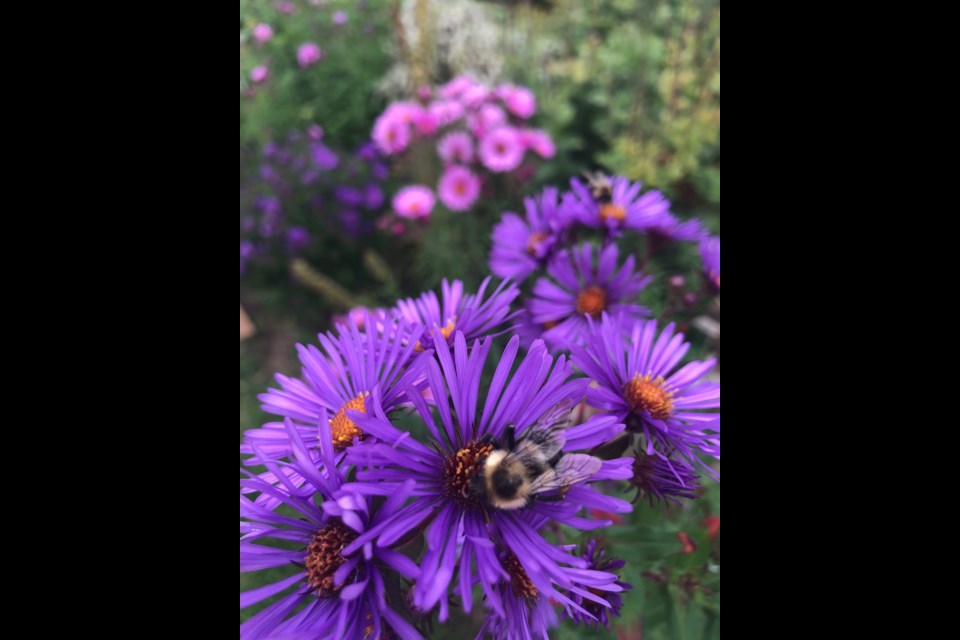THUNDER BAY -- Maggie Landry is in the process of converting the lawn on her property into naturalized areas that provide habitat for native pollinators.
Landry used to be a certified organic gardener in B.C., before she moved to Thunder Bay. She discovered monarch butterflies here, and started growing milkweed. “Now I’m interested in native bees and creating habitat for them. They’re just fascinating,” she says.
Although Landry still grows a few vegetables for herself, her focus is now on gardening for wildlife. “I feel that I can garden for enjoyment rather than for just producing vegetables,” she says.
Converting lawn into a naturalized yard isn’t as easy as sprinkling some wildflower seeds on the ground. The grass must be removed in order for other plants to have a chance. Landry uses cardboard to kill the grass, though the process can be messy. She starts many plants from seed, sowing them in milk jugs outside so that they can get cold stratified as they would in the natural environment. She also has a grow light for the hundreds of plants she starts inside.
“It’s a passion of mine, so it’s not really work to me,” she says.
Currently, Landry says 80 to 90 per cent of the plants in her garden are native. She still likes her peony, although it doesn’t fill an ecological niche, which is an important criterion for her. “When I get a plant, [I think,] what is it going to do for the native pollinators, what is its role?”
Keystone species (an organism that helps define the ecosystem) such as milkweed, willow, oak, serviceberry, mountain ash, and staghorn sumac are important elements in her garden. She also has liatris, prairie dock, bergamot, allium, coneflower, lobelia, vervain, aster and other plants.
“When I pick a plant or seed to grow, I always do my research. I don’t just get it for its looks, it has to serve an ecological purpose in my yard,“ she explains.
To suppress weeds around trees, she puts down straw. “I hate wood chips - plants aren’t meant to grow in wood,” she explains. Oftentimes, horsetail, a perennial weed, starts growing where wood chips are laid down, because the soil become poor underneath the wood chips.
“It’s much better to plant closer together,” she suggests. “Usually I’m finished weeding my garden by the end of June, then I don’t have to weed again until next year. Once the garden is established, you don’t even need to water. My garden is now in its second year and it’s amazing; very few weeds.”
Landry says people don’t have to go all in to convert their property; starting small is still meaningful. “I think we can make a difference one yard at a time,” she says. “Any little bit of native plants you can get into your yard or balcony is worth doing. It provides a chain of pollinator habitat for wildlife. So if my neighbour has some, and their neighbour has some, it starts creating a ribbon. Once people start growing them, they’ll fall in love with native plants because they’re so beautiful, hardy and drought resistant.”
Landry’s garden is one of seven gardens being featured in the Thunder Bay Art Gallery’s 25th Annual Garden Tour on Sunday, July 24. Tickets will be available for purchase at the Art Gallery in early July. Details will be available on their Facebook page. Those interested in learning more about naturalization and gardening for pollinators can attend the garden tour to see Landry’s garden, and she will also be giving a talk on site.



